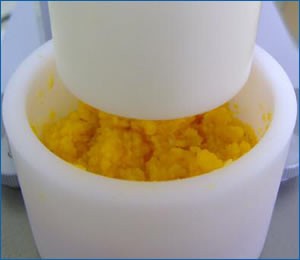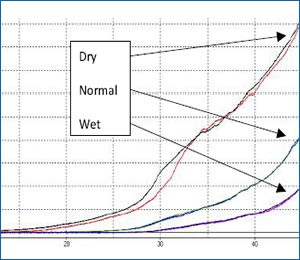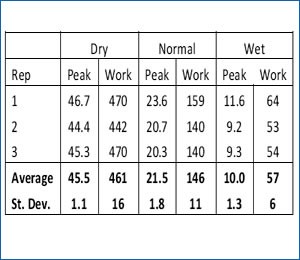Texture Analysis SolutionsPerogie Mixture Filling Consistency
Highlights
- Objective measurement of the physical properties of the mixed moisture-rich product
- Repeatable test method for comparative results using a software-controlled texture analyzer
- Industry-standard back extrusion fixture to accurately evaluate the impact of water content levels on flow and consistency
- Quantified viscosity-related texture profile to check product against acceptance criteria for thin to thick mixutre variations
Application
 One sample of perogie (or pierogi) filling was sent for preliminary evaluation. This sample is representative of the whole line of products; therefore these methods can be applied to the full range of products produced.
One sample of perogie (or pierogi) filling was sent for preliminary evaluation. This sample is representative of the whole line of products; therefore these methods can be applied to the full range of products produced.
Problem
 The final texture of this product is basically controlled by adding water to the product, typically described as a "slurry". Due to changes in the incoming product and different workers subjectively controlling the amount of water, the final product is not as consistent as the processor would like.
The final texture of this product is basically controlled by adding water to the product, typically described as a "slurry". Due to changes in the incoming product and different workers subjectively controlling the amount of water, the final product is not as consistent as the processor would like.
A product with too much water, or “wet,” would not hold its shape through the remainder of the process. On the other hand, a product without enough water, may be too “dry,” therefore crumbles and does not hold a consistent shape. A way to objectively measure the water content and therefore control the overall texture of the product is needed.
Solution
 Before testing, sample was allowed to thaw and equilibrate to room temperature (about 72 F°). A given amount (100 grams) of product was weighed and placed in a sample cup for each test replication. Because only one sample was sent, the product was manipulated to produce 3 different sample sets. It was strained in a colander to produce a “dry” product and water was added to make a “wet” product. The samples were then back extruded using a piston / plunger smaller than the container holding the sample.
Before testing, sample was allowed to thaw and equilibrate to room temperature (about 72 F°). A given amount (100 grams) of product was weighed and placed in a sample cup for each test replication. Because only one sample was sent, the product was manipulated to produce 3 different sample sets. It was strained in a colander to produce a “dry” product and water was added to make a “wet” product. The samples were then back extruded using a piston / plunger smaller than the container holding the sample.
All testing was done using the TMS-Pro at a speed of 100 mm/min. As the plunger moved down, the filling flowed up and around the compression piston. The samples were compressed to a distance 10 mm from the bottom of the container. The force required to deform the product gives a good indication of the way a semi-solid food will move and behave under process conditions.
Benefit
- By measuring and therefore controlling texture, a processor can produce a more consistent “on target” product.
- Allows users to objectively “see” the difference between butter and margarine products and various formulations.
- Test suitable for all filling mixtures - mushrooms, potato, cheese or meat.
